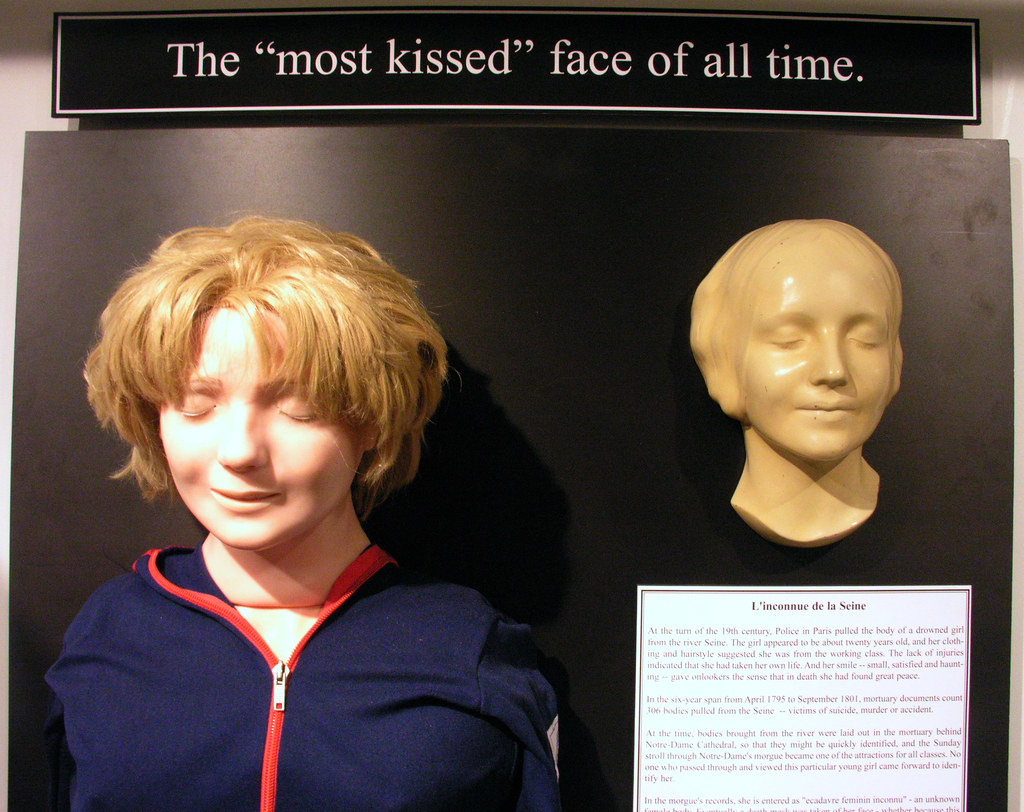Sometime in the late 19th century, the body of a young woman was fished out of the Seine River in Paris. Because there was no evidence of violence upon her, it was assumed that she had taken her own life. This was nothing new. On average, some two hundred people are pulled out of Seine’s murky water each year by Paris's river police. At least a quarter of them are corpses, and nearly half of those pulled out are people attempting suicide. Young women make up the biggest proportion of suicides.
In those days, when an identified body was recovered, it was laid on a marble slab and propped up against the morgue window for the public to view, in the hope that someone will recognize it. Death and punishment were once popular forms of entertainment in Europe, and this macabre display of corpses drew everyone—from young to old—to the morgue. But nothing captured the imagination of Parisians that year, and the century that followed, like the suicide of this mysterious and beautiful young woman.
The story goes that the pathologist on duty became so entranced by her beauty that he had a plaster cast of her face made. Before long, the white plaster cast of the unknown woman with a Mona Lisa smile started appearing in shops throughout Paris, and in the following years, copies of the mask became a fixture in all fashionable Bohemian homes across Europe. The mask’s enigmatic smile bewitched artists, poets and novelists, and over the decades dozens of poems were written and stories invented to give the young woman an identity.
In Richard Le Gallienne's 1900 novella The Worshipper of the Image, an English poet falls in love with the mask, eventually leading to the death of his daughter and the suicide of his wife. The 1936 German movie Die Unbekannte, about an orphan who was seduced by a rich lover and then abandoned leading to her suicide, was inspired by this death mask. Generations later, when the Norwegian toy maker Asmund Laerdal had to choose a face for his CPR training mannequin, he turned to the “Inconnue de la Seine" —the unknown woman of the Seine.
In the 1960s, Asmund Laerdal was approached by Peter Safar, an Austrian doctor who pioneered the CPR technique, to make a training aid for the newly-invented technique. Laerdal nearly lost his own son to drowning a few years earlier, and that made him very receptive to the idea.
Laerdal designed a realistic female doll and fashioned her face on the famous death mask. This doll, known as Resusci Anne, is one of Laerdal’s best known medical products and is used widely throughout the world to train medical and paramedical students the technique of mouth-to-mouth resuscitation—prompting some to call the Inconnue the most kissed girl on earth.
By choosing her mask, Laerdal turned Resusci Anne into a memorial of the unknown lady who drowned in the Seine. “Because she has no name and remains an enigma, we can never reach her and taint her ... we project our own dreams on to her,” reads the Laerdal company's literature.
Woman practicing CPR on a mannequin. Photo credit: Africa Studio/Shutterstock.com
But over the decades questions have arose over the authenticity of the face. Was it really the death mask of a drowned woman, or was the mold taken from an alive and slightly bemused model?
“It's surprising to see such a peaceful face,” said Pascal Jacquin, Chief Brigadier of Brigade Fluviale, the Paris river police responsible for pulling out drowned bodies from the Seine. Pascal Jacquin has seen more drowned corpses than any other person in Paris. “Everyone we find in the water, the drowned and suicides, they never look so peaceful. They're swollen, they don't look nice,” he explained.
Death by drowning is violent, and even suicides fight for life at the last moment. These final moments of terror, pain and doubt are often frozen on their faces. This woman, on the other hand, with her unblemished face, looks more like asleep and dreaming about Mr. Charming, Jacquin remarked.
When the BBC consulted other experts for their opinion, they also agreed that the Inconnue was too healthy to be a mask taken from a corpse. Michel Lorenzi, who owns a molder’s workshop in Paris, believes that the mask was taken from a live person.
“It's very hard to maintain a smile while a cast is being taken,” said Lorenzi, “I think she was a professional, a very good model.”
The Inconnue de la Seine at the International Life Cast Museum, in Boston.















